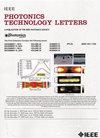基于重要性抽样的概率星座形成的端到端学习
IF 2.5
3区 工程技术
Q2 ENGINEERING, ELECTRICAL & ELECTRONIC
引用次数: 0
摘要
概率星座形成使其易于速率适应,并已被证明可以减小与香农容量的差距。对星座点概率进行优化,使互信息或逐位互信息最大化。然而,即使对于简单的信道模型,优化问题也是具有挑战性的。虽然基于自编码器的机器学习已经成功地应用于解决这个问题,但它需要手动计算梯度的附加项,这是一个容易出错的任务。在这项工作中,我们提出了一种新的损失函数,用于基于自编码器的概率星座形成学习,用于使用自动微分和重要性采样的编码调制系统。分析表明,我们提出的方法也使用精确的星座点概率梯度进行优化。在模拟中,我们的结果与(Aref和Chagnon, 2022)对加性高斯白噪声信道和强度调制直接检测信道的简化模型的结果非常吻合。本文章由计算机程序翻译,如有差异,请以英文原文为准。
End-to-End Learning of Probabilistic Constellation Shaping Through Importance Sampling
Probabilistic constellation shaping enables easy rate adaption and has been proven to reduce the gap to Shannon capacity. Constellation point probabilities are optimized to maximize either the mutual information or the bit-wise mutual information. The optimization problem is however challenging even for simple channel models. While autoencoder-based machine learning has been applied successfully to solve this problem, it requires manual computation of additional terms for the gradient which is an error-prone task. In this work, we present novel loss functions for autoencoder-based learning of probabilistic constellation shaping for coded modulation systems using automatic differentiation and importance sampling. We show analytically that our proposed approach also uses exact gradients of the constellation point probabilities for the optimization. In simulations, our results closely match the results from (Aref and Chagnon, 2022) for the additive white Gaussian noise channel and a simplified model of the intensity-modulation direct-detection channel.
求助全文
通过发布文献求助,成功后即可免费获取论文全文。
去求助
来源期刊

IEEE Photonics Technology Letters
工程技术-工程:电子与电气
CiteScore
5.00
自引率
3.80%
发文量
404
审稿时长
2.0 months
期刊介绍:
IEEE Photonics Technology Letters addresses all aspects of the IEEE Photonics Society Constitutional Field of Interest with emphasis on photonic/lightwave components and applications, laser physics and systems and laser/electro-optics technology. Examples of subject areas for the above areas of concentration are integrated optic and optoelectronic devices, high-power laser arrays (e.g. diode, CO2), free electron lasers, solid, state lasers, laser materials'' interactions and femtosecond laser techniques. The letters journal publishes engineering, applied physics and physics oriented papers. Emphasis is on rapid publication of timely manuscripts. A goal is to provide a focal point of quality engineering-oriented papers in the electro-optics field not found in other rapid-publication journals.
 求助内容:
求助内容: 应助结果提醒方式:
应助结果提醒方式:


